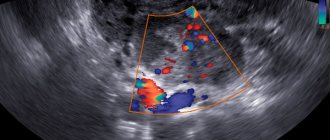The in vitro fertilization procedure is a real miracle for couples experiencing problems conceiving a child. Nowadays, quite often couples are faced with the inability to get pregnant due to certain pathologies in the body of the woman and man. After many unsuccessful attempts, spouses can resort to IVF. This complex and painstaking process, with the help of which a woman’s egg is extracted and fertilized in vitro with a man’s sperm in a laboratory setting. The fertilized egg is then implanted in the woman, and if successful, the woman becomes pregnant and carries the child. Or not just one, but twins and even triplets.
How does this process go, what rules should be followed after the transplant, and what are the chances of a successful pregnancy?
When and how is embryo transfer performed?
Some time before IVF, a married couple needs to adhere to certain recommendations.
A woman needs to avoid situations that can provoke stress, eat right, avoid alcohol and smoking, and also give up heavy physical activity. A man will have to donate sperm, and at the same time he must also eat a balanced diet, not take medications, and 3-4 days before the procedure he should abstain from sexual intercourse.
It is necessary to carefully prepare for the process of egg retrieval. To do this, on the 2-3rd day of the menstrual cycle, the woman undergoes an ultrasound examination, and if everything is in order, the doctor prescribes hormonal therapy. This is necessary to stimulate the ovaries to produce eggs in greater numbers than usual: instead of 1-2, 10 or more may grow.
The more eggs, the higher the chances of successful fertilization and embryo development.
From this moment it is necessary to start hormonal therapy - taking progesterone . This is the so-called pregnancy hormone. It is needed for its successful course and for the non-rejection of the embryo. Normally, it is produced by the body in sufficient quantities, but with IVF, additional medication is required - tablets or suppositories (Duphaston, Lutein, Utrozhestan).
Then, for about 2 weeks, the woman undergoes regular ultrasound scans to assess the condition of her uterus and ovaries, adjust therapy if necessary, and find out when the follicles in the ovaries will finally reach the desired level of maturity. After maturation, a puncture is carried out - a procedure for collecting mature follicles, on the same day the husband must donate sperm. It is also carefully monitored and processed to increase the chances of success.
After the germ cells are extracted from the ovaries, embryologists carry out the procedure for fertilizing them in test tubes. As a result, zygotes are formed - future embryos. They are grown in test tubes in special incubators under the strict supervision of embryologists for 3-5 days.
Usually on the fifth day they are ready for transplantation into the uterus. At the same time, the condition of the endometrium is monitored - the inner layer of the uterus, which plays almost the main role in the process of embryo attachment. It must be mature enough to accept the embryo, which is monitored using ultrasound.
Embryologists scrupulously evaluate each resulting embryo and select the best. Usually 2-3 embryos are implanted to increase the possibility of successful embryo attachment, but this also introduces the risk of multiple pregnancy, that is, the possible appearance of twins or triplets if all the implanted embryos implant.
Embryo transfer is a painless procedure that is carried out even without anesthesia , and lasts up to 10 minutes. Embryos are inserted into the uterus using a catheter and syringe. All this happens with simultaneous ultrasound monitoring.
Patients are worried about how long they need to lie down after embryo transfer? Typically, a woman lies down for about half an hour after the procedure, and then can safely leave the clinic. And this is not even necessary; lying down does not affect the transfer in any way, but in order to calm the woman down, she is asked to remain lying down for a while.
How to eat
It is worth including more protein foods (chicken, turkey, beef, eggs), vegetables, fruits, nuts, cottage cheese in your diet. They will help the body recover after stimulation and puncture, and will provide the entire set of necessary microelements for the growth and development of the embryo.
But it’s better to avoid smoked, salty foods and fast food. Also try not to eat foods that cause gas and constipation (dries, cabbage, legumes). If you still have problems with bowel movements, contact your doctor for a recommendation; you should not prescribe medications yourself. Drink more water and natural fruit drinks (at least one and a half liters per day), limit tea consumption (no more than a cup per day), forget about coffee for a while.
What happens to the mother’s body after the transplant?
How does the embryo behave after transfer? As with natural fertilization, the fertilized egg, if successful, is fixed in the uterine cavity, and its development begins. The woman who underwent the transplant, of course, hopes for a miracle and expects to quickly feel changes in her body indicating a successful outcome of the procedure. But in the first two weeks after embryo transfer there are usually no sensations .
Implantation of the embryo, that is, its introduction into the uterus with subsequent development, can occur no earlier than 7 days. And there may be no new sensations for another week; even a pregnancy test at this time is not informative.
Only after about two weeks can reliable signs of successful implantation appear. At the same time, some patients complain that their stomach is tight after embryo transfer, their health and general condition worsen, and nausea or weakness occurs. Most often, this is a woman’s body’s reaction to drug therapy prescribed as medicinal support.
Typically, women who have undergone IVF may experience the following sensations after embryo transfer in a successful protocol:
- in the first 3-8 days after the procedure - dizziness and weakness, headache, drowsiness and increased fatigue, breast engorgement;
- after 2 weeks - frequent urination, constipation and intestinal problems, darkening of the nipple areolas, increased sensitivity and soreness of the breasts.
After embryo transfer during IVF, after some time, spotting brownish discharge may occur . If they are odorless and there are no unpleasant symptoms (burning, itching, pain, high body temperature), this may be a good sign: the fertilized egg, when implanted into the uterine wall, destroys small blood vessels. This phenomenon is called implantation bleeding, and often occurs during normal pregnancy.
However, discharge can also occur in the opposite situation - with an unsuccessful attempt at fixation. Then they have a sharp unpleasant odor, are very abundant and have a gray-green color. This requires contacting a doctor.
Stages of egg formation
How the future fetus develops directly depends on the date of its transfer into the woman’s body. There is no exact definition of when this should be done. It all depends on the characteristics of the expectant mother’s body, the number of mature eggs and their quality. This kind of decision is made by the embryologist.
They mainly carry three-day and five-day eggs, which is the name given to a fertilized egg at different stages of maturation.
- The first day shows whether there are male and female nuclei in the body of the egg, indicating fertilization. They are left for further transfer, the rest are eliminated.
- Afterwards, on the second day, the formation of a zygote occurs, the fusion of the male and female genomes. At this stage, it can already be called an embryo. Crushing takes place, the product of this process is called blastomeres.
- On the third day of anagenesis, the normal content of blastomeres ranges from six to eight, in rare cases four. At this stage, its genome develops, and the further maturation of the embryo depends on it.
- On the fourth day, the embryo consists of 14–16 cells and reaches a stage where, if it were in the woman’s body, it would exit into the uterine cavity. The villi are smoothed out, a process of cavitation occurs and a morula is formed. Gradually a cavity is created inside.
- On days 5 and 6, the cavity forms more than half of the cell. Now it is no longer an embryo, but a blastocyst. The entire period of maturation, the cell mass was in a shiny shell, which protected it from external influences. After leaving the shell, the blastocyst is ready for transfer to the uterus.
Possible problems
Doctors will never give a 100% guarantee of the success of an IVF procedure. The success rate of its implementation is 40-50% , and it depends on many factors:
- patient's age;
- the reason for her infertility;
- excess weight;
- correctness of actions during transplantation;
- disruptions in the functioning of a woman’s immune system.
For what reasons may an embryo not take root in the uterus? This may be a consequence:
- genetic abnormalities of the embryo;
- the woman's past abortions;
- progesterone deficiency in the body;
- insufficient thickness of the endometrium;
- uterine fibroids.
The patient should immediately consult a doctor if she experiences the following symptoms after the transplant:
- spotting - this can be not only implantation bleeding, but also hormonal imbalances, or menstruation in case of failure;
- severe pain;
- a high temperature after embryo transfer during IVF may indicate an infection in the body, but a slight increase may also be a sign of pregnancy.
Stopping embryo development after IVF: possible reasons
Sometimes the patient may not wait for the embryo transfer after IVF, since they have stopped dividing and developing. According to statistics, 10-15% of embryos stop the division process at the stage of 2-4 cells (on day 2). Stopping division is a natural selection process that prevents the appearance of an infant with genetic defects.
Reasons for the cessation of embryo development after IVF:
- Suboptimal cultivation environment;
- Genetic abnormalities;
- Inability to activate the embryo's genome for further development;
- Cell defects, etc.
There are many reasons for the cessation or absence of embryo development after IVF, but the main one is a genetic abnormality. It can appear at the zygote stage, on the 3rd day, after transplantation or after implantation.
Specialists at the IVF Center clinic in Smolensk conduct a thorough diagnosis of the condition of embryos at all stages of IVF, which allows them to obtain the best results from this procedure.
Lifestyle after embryo transfer. What is possible and what is not
After the transplant, the main period is the next 14 days, after which it will be possible to find out how the procedure went. During this time, the patient needs to take maximum care of herself and adhere to the following recommendations:
- It is strictly forbidden to lift weights and perform hard physical work;
- you need to stop active sports;
- it is necessary to observe sexual rest for 2-3 months, but the exact period depends on the success of the consolidation of the fetus and the absence of a threat of miscarriage during pregnancy;
- do not take a hot bath, do not go to the sauna or bathhouse - only a warm shower;
- avoid stress, ensure a favorable psycho-emotional state, try to receive only positive emotions;
- protect yourself as much as possible from colds and infections after embryo transfer: dress warmly, do not get too cold and avoid crowded places where there is a high risk of infection;
- carefully monitor nutrition and the quality of foods consumed in order to prevent intestinal disorders and constipation;
- Be sure to stop drinking alcohol and smoking;
- normalize nutrition and limit the consumption of unhealthy foods (such as smoked, salted, fried, fast food, store-bought sweets);
At the same time, it is not recommended to lead a sedentary lifestyle, because it contributes to insufficient blood supply to the pelvic organs. You shouldn’t lie on the couch all the time: walks in the air and light morning exercises will be very helpful.
Sleep is the best way to relax and recuperate, so you need to sleep at least 8-9 hours a day. Proper nutrition, sleep and rest patterns, walks and a stable emotional state - all this helps to increase the chances of success.
You need to monitor your health, and if any unpleasant symptoms or changes in your usual condition occur, consult a doctor. It is better to contact a “false alarm” and calm down than to miss a dangerous symptom.
Luteal phase support
The implantation process is still a mystery for fertility specialists. It can be defined as a kind of dialogue between the endometrium of the uterus and the embryo. The only aspect that has been studied regarding the triggers for the success of this dialogue is hormonal support of the luteal phase. The course of hormone therapy, which prepares the endometrium for the attachment of embryos, is developed individually for each patient.
Main groups of drugs
The list of the most important pharmacological agents includes:
Additional medications are prescribed as indicated in the presence of abnormalities, such as hypercoagulability. As part of preconception preparation, women receive a complex of multivitamins with a high concentration of folic acid and polyunsaturated fatty acids.
Rules for post-procedure behavior of the patient
It is important that the woman follows her doctor's recommendations while waiting for the results of the transfer. No special restrictions are required from it. There is no reason to lie down for several hours after completing the procedure. The anatomical structure and position of the uterus are adapted by nature itself to maintain pregnancy.
There is no need to be afraid to make unnecessary movements or go to bed rest (only in rare cases this may be necessary). You are allowed to go to work, use all types of modern transport (cars, planes, ships, trains), drive your own car, and meet with friends.
List of prohibitive measures:
Reasonable precautions contribute to successful embryo implantation. If in doubt, alarming symptoms appear or you are concerned about the side effects of medications, you should definitely consult with your doctor.
Possible symptoms:
These signs are considered a manifestation of pregnancy. However, women undergoing IVF treatment are prone to self-hypnosis and may take wishful thinking. Therefore, until the test result for hCG is positive, the listed symptoms should not be perceived as reliable. And vice versa: if even on the 14th day after embryo transfer the sensations indicated above are not experienced by the patient, you should not draw premature conclusions.
Possible problems
The “alarm bells” listed below should alert a woman and prompt her to contact the clinic:
If any acute situation occurs, inpatient observation and treatment are most appropriate.
In no case should you ignore the symptoms of OHSS development:
If you suspect OHSS, you should immediately visit a doctor and undergo a number of diagnostic measures:
Transfer results
Patients are not recommended to undergo premature tests. There is no benefit from such “self-research”: if carried out before the tenth day after the transfer, they are not considered informative. But hasty unprofessional “verdicts” can cause a lot of harm, especially for women prone to depression.
In most clinics, pregnancy is diagnosed 2 weeks after embryo transfer by testing for hCG and progesterone. A week after the positive response, an ultrasound is performed and a final conclusion is made on the course of treatment. After another 7 days, you will be able to hear the heartbeat of the unborn child.
When and how can you know that the implantation was successful?
You can talk about successful or unsuccessful implantation no earlier than 14-15 days from the day of the transplant. This time will truly be the most appropriate time to perform a pregnancy test after embryo transfer and obtain a reliable result. A woman can conduct a pregnancy test herself by purchasing it at a pharmacy.
But the most realistic result is obtained after taking a blood test in the laboratory for hCG - a hormone that accurately shows the presence or absence of pregnancy. The obtained result can be compared with the table of hCG indicators after embryo transfer, scheduled by day:
Successful implantation will be indicated by a hCG value of 100 IU/ml . High rates of 200-300 units will indicate the consolidation of more than one embryo and a multiple pregnancy, that is, a woman can carry twins or triplets.
If the hCG value is lower and ranges from 50 to 75 IU/ml, then you need to continue monitoring for some time without stopping maintenance hormonal therapy . A lower value means that no consolidation has occurred. If unsuccessful, the patient may already begin her period.
Stages of development after transfer
In the presence of genetic damage, the development of most embryos stops already at the end of the third day. This phenomenon can be called natural selection, since only the stronger and healthier continue to develop.
Further, strengthening of intercellular connections and smoothing of the cell surface are observed. It becomes possible to assess the quality of the embryo. In some cases, replanting is carried out precisely on the third day at the morula stage (if the embryos obtained are not of the best quality, or there have been unsuccessful IVF attempts in the past).
This picture shows the embryo stages suitable for transfer: 3 days (morula) or 5 days (blastocyst).
On the fourth day from the moment of fertilization, blastomeres are divided into two groups:
- cell mass – gives rise to tissues and organs;
- trophoblast – influences the implantation process, forms extra-embryonic membranes.
A morula becomes a blastocyst when an expanding cavity half its size forms inside it. On the fifth day, she is completely ready for transplantation. Only the strongest and healthiest embryos survive to this point.
The microscope photo clearly shows how the embryo develops day by day to the blastocyst stage.
The implantation process usually begins during periods such as:
- 6 or 7 days after fertilization.
- 3 or 4 days after replanting 3 days (morul).
- On the 1st or 2nd day after the transfer of 5-day-old cells (blastocysts).
The engraftment process is completely completed around the ninth day after fertilization. Next, the placenta is formed, internal organs and extra-embryonic membranes are born. The production of the hormone hCG begins. Its amount in the blood increases daily, and based on the analysis, pregnancy is diagnosed.
This is interesting ! The picture shows embryos (from left to right): fish, amphibian, reptile, bird, human. Notice how similar the embryos are at the earliest stage of their lives.
Video
We advise you to watch an introductory video in which obstetricians-gynecologists talk in detail about IVF, proper preparation for the procedure and actions after it.
If you have any setbacks in the pregnancy planning process, do not despair. Modern reproductive technologies help couples with infertility problems become happy parents of their own child. And even the first failure during IVF is not a reason to give up your hope. Believe in the best, follow the doctors’ recommendations, and you will see the long-awaited two lines on the test.











